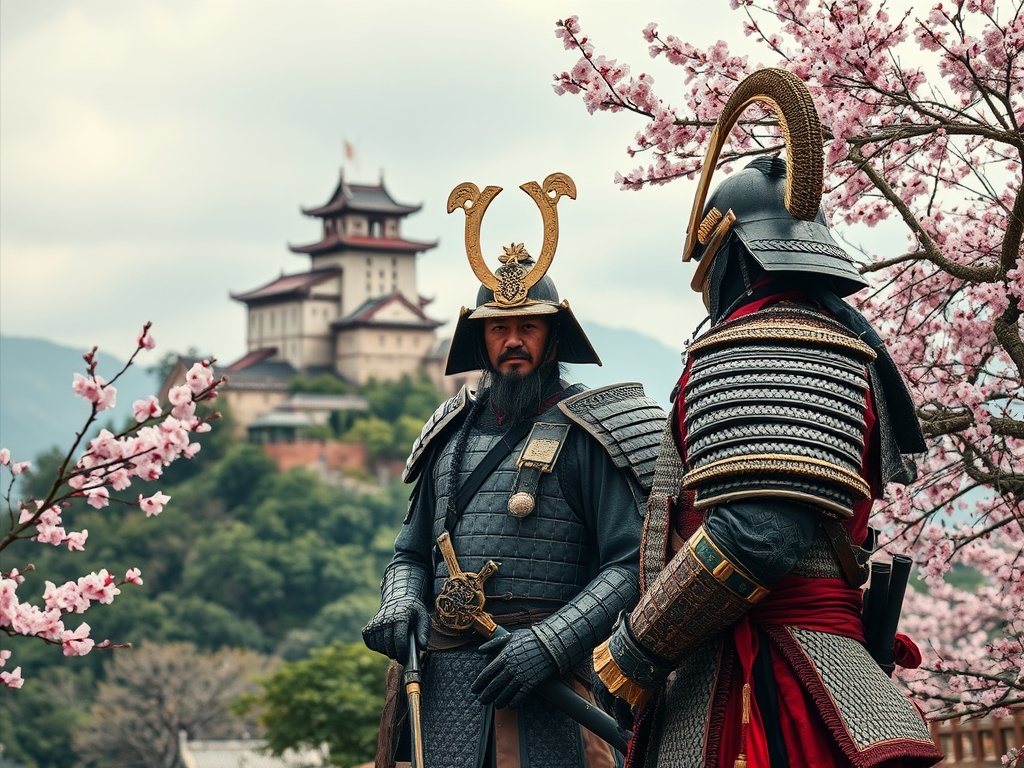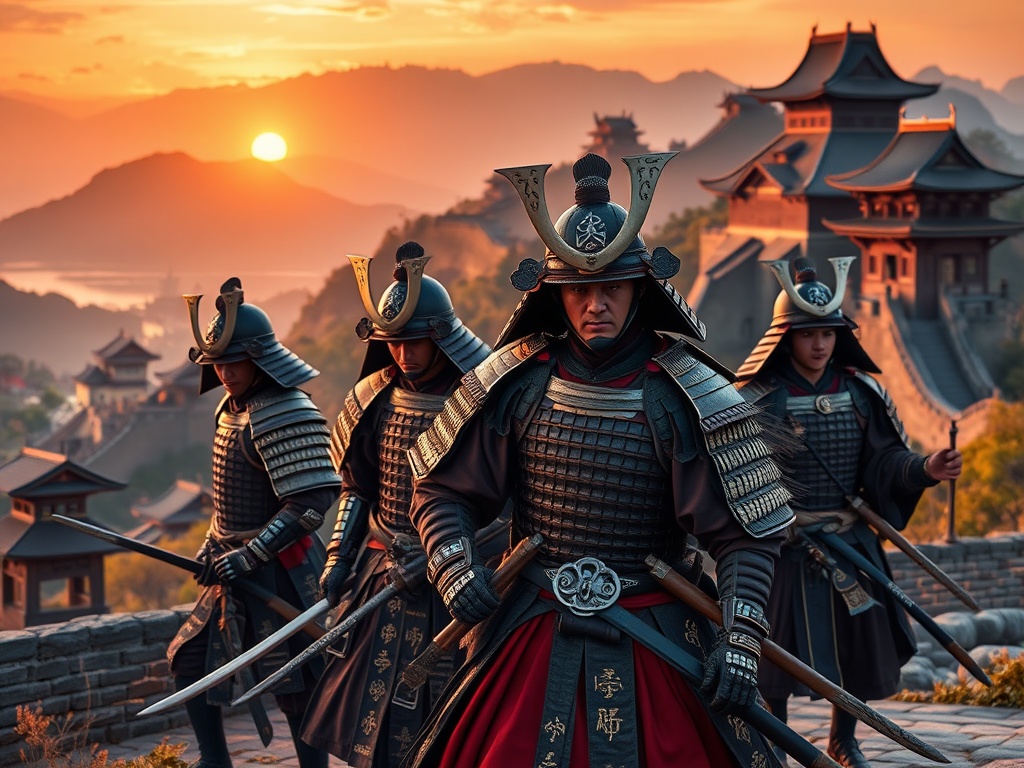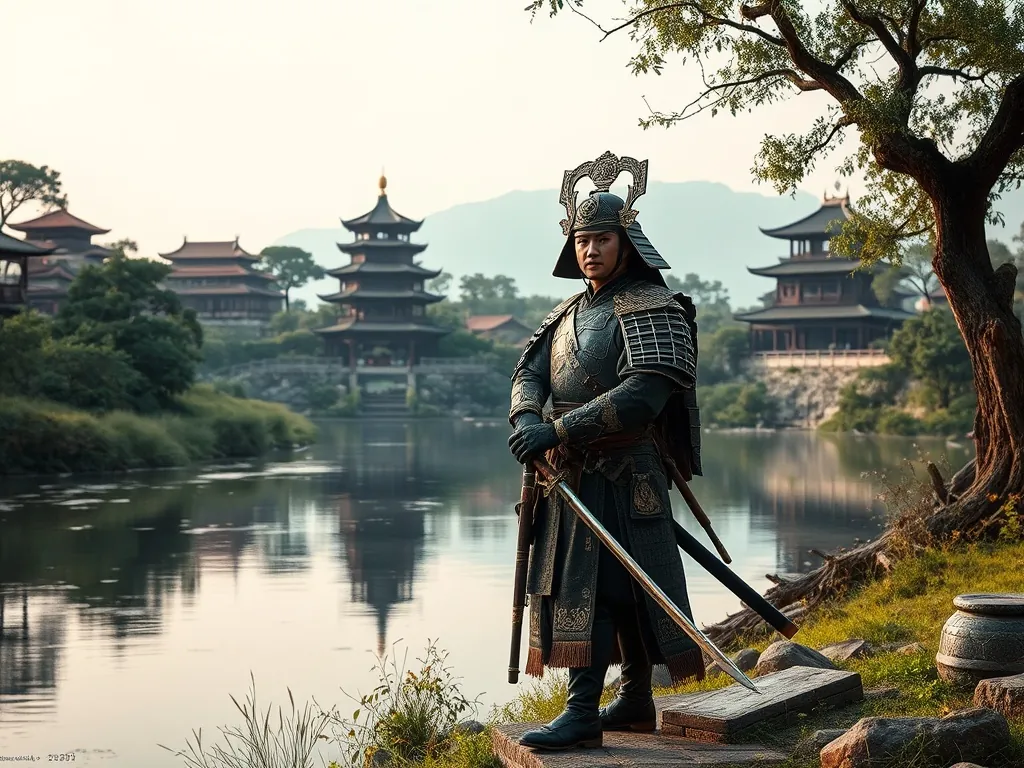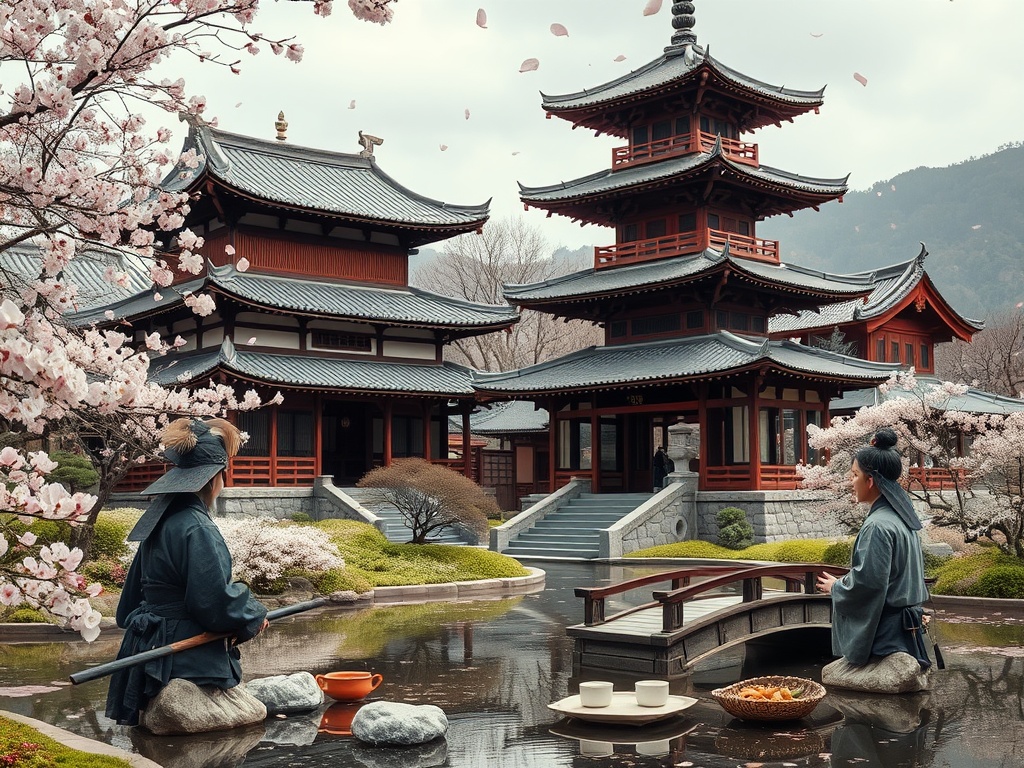Unmasking the Myth: Did Samurai Roam Ancient China?
Win a Free Trip to Japan!
Experience cherry blossoms and ancient temples
Amidst the traditional imagery of samurai in Japan, a curious question emerges: did these awe-inspiring warriors ever set foot in ancient China? The notion of Chinese samurai might seem like a historical anomaly, yet it is a captivating subject for travel and tourism enthusiasts. Let’s delve into this intriguing question and unravel the tapestry of East Asian martial history.
While the term samurai is distinctly Japanese, reflecting the feudal warriors who served the noble classes, China had its own class of esteemed martial figures. These warriors, known as the Shì or Shì Dàfū, were the scholarly officials and knights during the Zhou dynasty. Despite originating from different cultural milieus, the Shì and the Samurai both embraced the code of honor and martial prowess.
Chinese warriors were renowned for their strategic acumen and played pivotal roles in the defense and expansion of ancient Chinese dynasties. Though they are not called ‘samurai’, their impact and legacy are no less significant.
For travelers exploring the rich history of China, understanding the presence of samurai-like warriors is an enthralling journey through time. While historical records do not explicitly document the presence of Japanese samurai in China, the cultural exchange between the two nations could have led to shared martial techniques and philosophies.
The following are some similarities and points of cultural exchange between Chinese and Japanese martial traditions:
- Martial Techniques: Both cultures developed sophisticated techniques in swordsmanship and archery, refined through centuries of warfare.
- Philosophical Influence: Confucian and Zen principles heavily influenced the warrior codes, emphasizing loyalty, honor, and discipline.
- Military Exchange: During times of trade and conflict, there were instances of mutual influence in military tactics and armaments.
For those who wish to immerse themselves in the martial heritage of China, several sites offer a glimpse into this storied past. Visit the ancient Terracotta Army in Xi’an to witness the grandeur of the Qin dynasty’s military might. Wander through the historical streets of Luoyang, where the echoes of ancient warriors still linger. These destinations provide a captivating journey for any traveler eager to explore the rich tapestry of China’s martial history.
Warrior Ways: Discovering the Chinese Samurai Legacy
Embark on a captivating journey as we unveil the enigmatic legacy of Chinese warriors, often likened to the legendary samurai of Japan. While the term ‘Chinese Samurai’ may not be historically accurate, the spirit of these formidable figures resonates with history enthusiasts and travelers alike. Delve into the narratives of these martial paragons who, much like their Japanese counterparts, were masters of strategy, swordplay, and unwavering honor.
For travelers enchanted by the martial traditions of ancient China, numerous sites offer windows into a world of valor and discipline. These landmarks are not only testaments to the might of Chinese warriors but also repositories of cultural and historical significance.
- The Great Wall of China: Marvel at this monumental fortification, an engineering feat that harbored brave defenders ready to protect their lands against invasions.
- Hubei Provincial Museum: Home to relics of the Warring States period, this museum showcases weapons and armor that reflect the prowess of ancient warriors.
Discover the ethical and moral codes that governed the lives of these warriors. The concept of ‘Wǔ Dào’—the way of the warrior—intertwined with Confucian ideals, painted a portrait of warriors as both cultured and fearsome. Explore how these principles shaped their conduct on and off the battlefield.
| Concept | Principle |
|---|---|
| Loyalty | Allegiance to one’s lord and duty |
| Honor | Unwavering integrity and reputation |
| Discipline | Mastery over oneself and one’s skills |
By immersing yourself in these historical touchstones, you can appreciate the profound influence of these martial legacies that continue to inspire and intrigue to this day.
Cultural Crossroads: Where Samurai and Chinese Traditions Intertwine
In the tapestry of East Asian history, the interplay between Chinese and Japanese martial traditions presents a fascinating narrative for those drawn to the mystique of ancient warriors. While the iconic image of the samurai is distinctly Japanese, the echoes of their martial ethos resonate across the seas, weaving through the rich heritage of Chinese warriors. This cultural crossroads is not only a testament to the shared history but also a captivating subject for travel and tourism enthusiasts eager to explore the nuances of these legendary figures.
The cultural exchanges between China and Japan over the centuries have resulted in a remarkable symbiosis of martial techniques and philosophies. Chinese martial arts, renowned for their graceful and precise movements, have influenced Japanese practices, while the discipline and rigor of the samurai have left an indelible mark on Chinese combat strategies. Travelers exploring this cross-cultural heritage will discover how these exchanges have enriched both traditions, creating a unique tapestry of shared martial wisdom.
Philosophically, both cultures have drawn from Confucian and Buddhist principles, emphasizing loyalty, honor, and discipline as cornerstones of the warrior ethos. This melding of ideas has fostered a deep mutual respect and understanding, which is evident in the stories and legends that continue to captivate audiences today.
For those who seek to delve deeper into this shared heritage, visiting historical sites in both China and Japan offers a tangible connection to the past. In China, regions such as Henan and Shaanxi house ancient relics and monuments that speak to the prowess of its warriors. Meanwhile, Japan’s own storied landscapes, with their castles and battlefields, provide a contrasting yet complementary narrative.
These destinations offer more than just a glimpse into the martial past; they serve as a bridge connecting travelers to the profound legacy of these intertwined traditions. As you walk through these historic sites, the air seems to whisper tales of valor and honor, inviting you to become part of the enduring saga that is the history of Chinese and Japanese martial traditions.
Ancient Armor and Enigmas: Exploring Chinese Warrior Lore
For those captivated by the mystique of ancient warriors, the Chinese warrior lore offers an intriguing tapestry woven with tales of valor, mystery, and timeless martial traditions. As you embark on this historical journey, you’ll uncover the enigmatic armor and legends that encapsulate the spirit of China’s ancient guardians. While the term ‘Chinese Samurai’ might be a misnomer, the essence of these warriors resonates with parallels to their Japanese counterparts, offering a vivid narrative that draws travelers into the heart of East Asia’s martial history.
In the annals of history, Chinese warriors are often depicted in elaborate armor that not only served as protection but also symbolized their status and prowess on the battlefield. Crafted with ingenuity, these armors were a testament to the artistry and technological advancements of their time. From the intricate lamellar armor of the Han dynasty to the scale armor of the Tang, each piece was designed for both aesthetic beauty and battlefield functionality. Travelers exploring museums and historical sites across China will find themselves mesmerized by the detailed craftsmanship that echoes the legacy of these fierce protectors.
Beyond the physical remnants of armor, the lore surrounding Chinese warriors is steeped in legends that continue to intrigue and inspire. Tales of legendary figures such as Yue Fei and Guan Yu, who are celebrated for their unwavering loyalty and martial skill, offer insights into the cultural values that shaped these warriors. As you wander through ancient battlegrounds and temples dedicated to these iconic figures, the air is thick with stories of bravery and honor, inviting you to uncover the truths hidden within these ancient enclosures. This fusion of history and mythology creates a rich narrative that beckons travelers to explore the depths of Chinese warrior heritage.
Beyond Borders: Tracing Samurai Influence in Chinese History
Travelers with a penchant for exploring the rich tapestry of East Asian history will find themselves captivated by the unique crossroads where Japanese and Chinese warrior traditions meet. While the iconic image of the samurai is deeply rooted in Japanese history, the influence of their ethos and martial practices has subtly woven itself into the fabric of Chinese history, creating a fascinating narrative for those who wish to delve deeper.
Journey through the annals of history and discover how the samurai, despite being distinctly Japanese, have left their mark on Chinese martial traditions. During periods of trade and cultural exchange, the philosophies and techniques of the samurai seeped into Chinese practices, enriching them with new dimensions of strategy and discipline. Chinese martial arts, renowned for their fluidity and grace, absorbed aspects of samurai swordsmanship, creating a symbiotic relationship that continues to intrigue historians and travelers alike.
As you travel through regions like Jiangsu and Zhejiang, you’ll encounter historical sites that whisper tales of this cultural exchange. Museums and ancient temples house relics and artifacts that offer glimpses into a past where warriors from both nations may have shared knowledge and skills, forging a legacy that transcends borders.
The cultural crossroads where Chinese and Japanese martial traditions intersect are not solely about techniques but also philosophies. The shared values of honor, loyalty, and discipline have been pivotal in shaping the ethos of warriors in both cultures. As you explore the historical narratives, you’ll find that these principles have fostered a profound mutual respect, creating legends that continue to captivate the imagination of travelers.
Regions such as Henan and Shaanxi stand as testaments to this shared legacy, where ancient battlegrounds and monuments serve as silent witnesses to the enduring influence of samurai principles. The air is thick with stories of valor and honor, inviting you to immerse yourself in the rich tapestry of East Asia’s martial history.
The Fusion of Steel: Samurai Swords in Chinese Battlefields
In the grand theater of East Asian martial history, the samurai sword, or katana, emerges as a symbol of elegance and precision. Its influence, however, is not confined to the shores of Japan. As travelers embark on a journey through the ancient landscapes of China, they uncover tales of how these exquisite blades found their way onto Chinese battlefields, weaving a narrative that speaks of cultural exchange and martial prowess.
Throughout the centuries, the intermingling of Chinese and Japanese martial traditions led to fascinating exchanges of weaponry and tactics. The katana, renowned for its sharpness and craftsmanship, was admired by Chinese warriors who saw in it a reflection of their own values of honor and skill. This admiration was not merely academic; it influenced the design and forging techniques of Chinese swords, creating a blend of artistry and functionality that captivated warriors from both cultures.
For those passionate about exploring these cross-cultural influences, regions like Jiangsu and Zhejiang offer glimpses into this shared martial heritage. Here, museums and historical sites house artifacts and relics that tell the story of the samurai’s subtle impact on Chinese warfare. As you wander through these storied halls, the air seems to echo with the clashing of swords and the whispers of ancient strategists who recognized the power of the samurai’s steel.
The legacy of the katana on Chinese battlefields is more than a tale of weaponry; it is a testament to the enduring influence of shared martial philosophies. The fusion of these traditions created a unique narrative that continues to intrigue travelers today. Journeying through the ancient cities of China, one can almost feel the presence of these legendary warriors, their spirits entwined in a dance of steel and honor that transcends borders and time.



